I’ve eaten cassava products all my life but I’d never tasted the cooked/ boiled tuber till last weekend. It is an interesting combination of starchy and chewy and a taste that isn’t as distinctive as I expected.
What it looks like
Think long tubers, about 20 – 30cm with tough brown skins bearing some resemblance to yams but for the pointed carrot-like tips.
How to select
Select tubers that are brown all over, without many scaly patches.
The photo above shows a fresh tuber. That below? Not-so-fresh tubers. See how the protective skin on the tubers has come off?
Peeling & Preparation
Peel as you would any other tuber with a vegetable peeler or a paring knife. I went with veggie peeler.
Raw cassava is not safe for consumption because it has cyanide in raw form. It must be cooked for all preparations.
Most of the tubers in this batch had purple streaks running through them – past their prime :(. Fresh cassava tubers should be white when you slice through.
The interesting thing for me was the discovery of a thick cord running through the centre.
You can remove it before or after cooking.
To cook, slice or cut into chunks or chips.
How to cook
There are a multitude of ways to cook cassava but I opted for boiled. I wanted to understand the texture.
It took about forty minutes to get the cassava chunks soft.
The texture and flavour remind me very much of starchier, chewier ‘not-as-sweet’ sweet potatoes.
Soon, I’ll share what I made with my boiled cassava.
Stay well and read Food52.com’s piece on cassava for more.
How do you cook and eat your fresh cassava?[wpurp-searchable-recipe]The Anatomy of Cassava – – – [/wpurp-searchable-recipe]

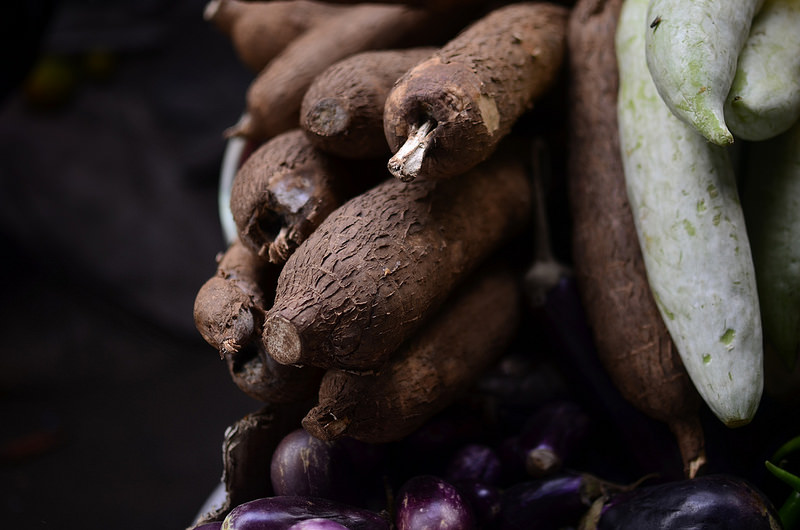

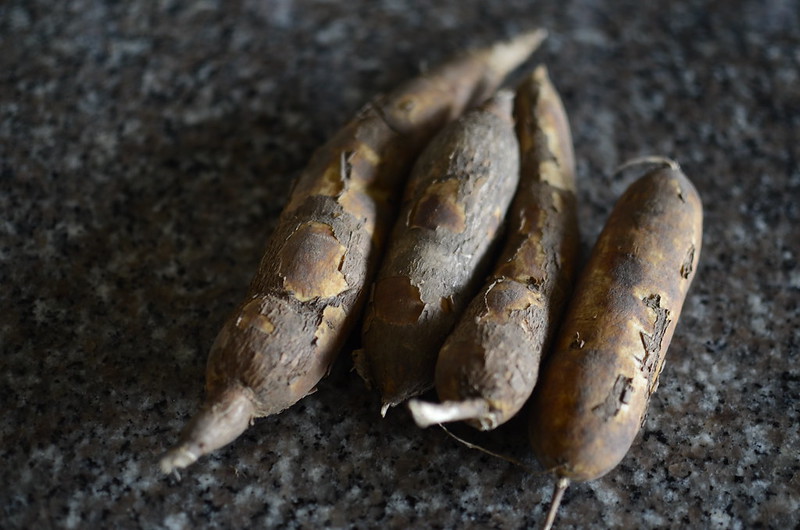
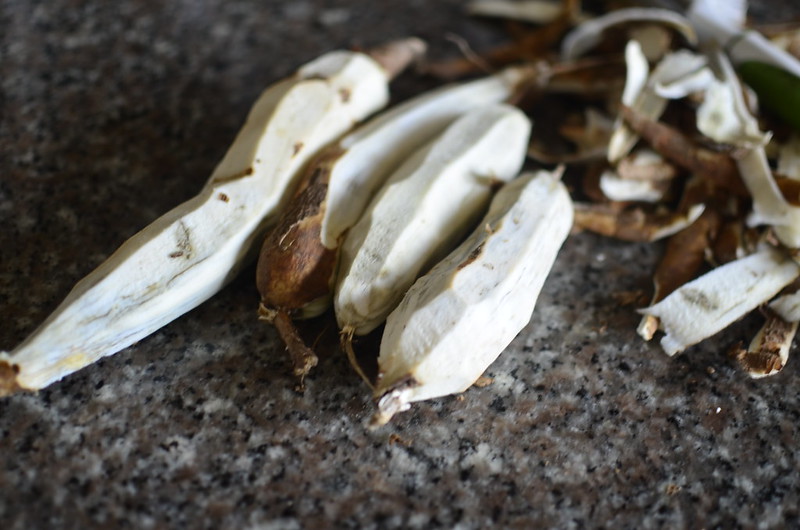
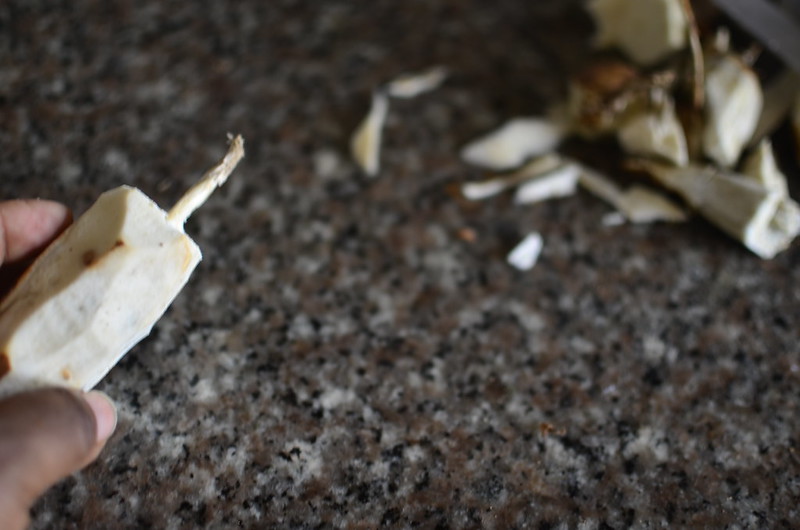
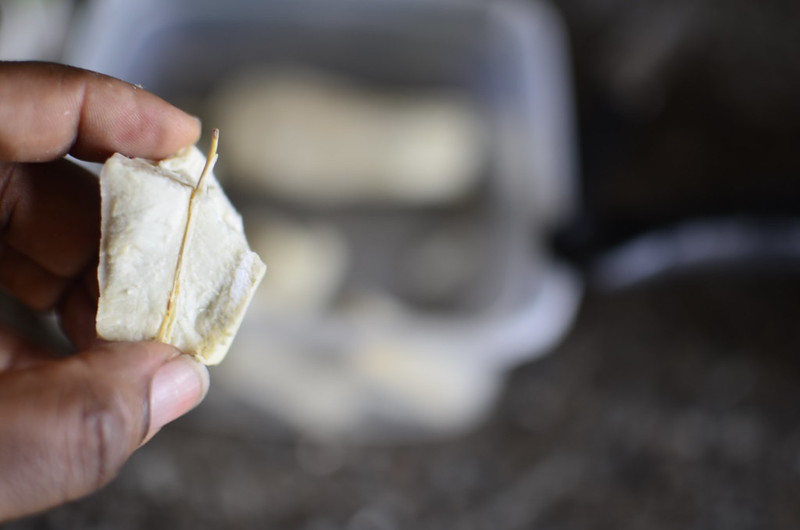
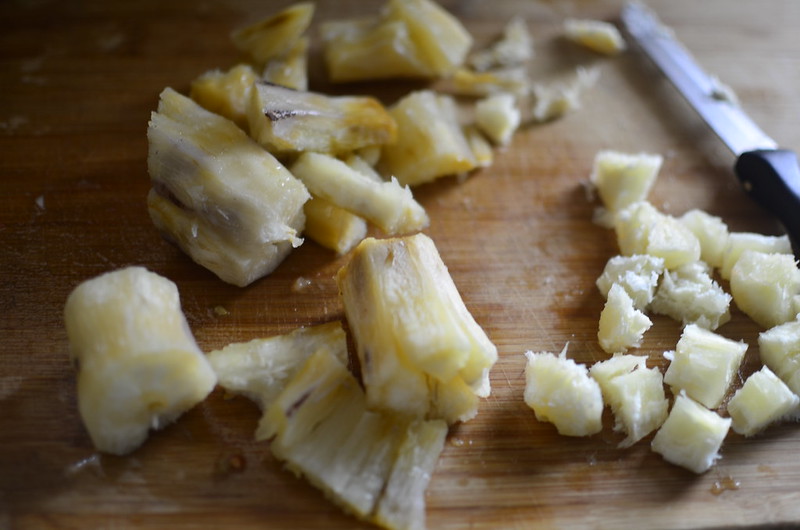
Leave a Reply